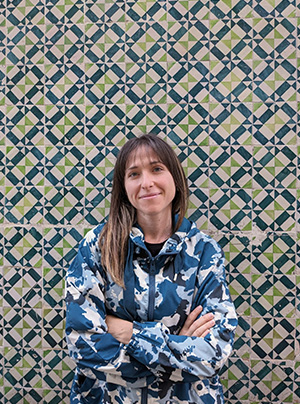
布兰卡·奥辛(Blanca Ausín)是西班牙萨拉曼卡大学的高级讲师。她是一位海洋学家和古气候学家,致力于通过融合观测、分析和建模方法,以及碳循环的不同方面,在不同时间尺度上解决跨学科的(古)海洋学问题。在苏黎世联邦理工学院(瑞士)担任博士后期间,布兰卡揭示了水动力颗粒排序过程对全球海洋沉积有机碳的放射性碳年龄具有普遍影响。她的研究提供了一个通用框架,可以指导有机碳埋藏的评估,并限定沉积记录中核心变化反映水动力变化与衍生代理信号的程度。她的工作标志着量化外源输入对古气候信号影响的重大进展,并提高了我们提供可靠古气候重建的能力。
布兰卡目前领导着由欧盟资助的PASSAGE项目(ERC,编号101039348),该项目研究记录气候信息的特定颗粒的放射性碳特征,以阐明气候记录中的偏差并改进气候解释。去年11月,PASSAGE团队及其合作伙伴在PASSAGE23海洋学巡航期间成功部署了两条锚系线,在西南伊比利亚边缘研究海洋沉积物的运输路径。
布兰卡是萨拉曼卡大学生物地球科学实验室(BIG)的负责人,该实验室专注于海洋和陆地生物标志物的分析,这些生物标志物通常用于重建过去的气候,并进一步进行放射性碳年代测定。欲了解更多信息,请访问网页:https://passage.usal.es/
Origin, transport, and fate of proxy particles in the ocean: implications for paleoclimate reconstructions
Marine sedimentary sequences are one of the best archives of past global climate changes. However, recent studies suggest that some sedimentary components commonly used as climate proxies are displaced to a considerable extent by advection, which implies potential spatiotemporal biases in the derived climate records. The latter raises important questions on the fidelity of the climate reconstructions derived from such proxy-bearing particles. To date, a direct assessment of particle provenance and transport pathways has remained elusive. Here, I will present the results from global and regional studies to shed light on the controls on the origin, (re-)distribution, and fate of organic matter and other inorganic sedimentary components that encapsulate climate information and are used to reconstruct past climate variability. Our work aims to address the complex interplay among biological, physicochemical, and geological processes that determine the abundance and geochemical signatures of proxy particles in the modern ocean and the sedimentary record. Our research aims to improve our ability to reliably interpret short-term climate variability by gaining detailed knowledge of particle transport modes and assessing their potential to bias inferred climate signals.